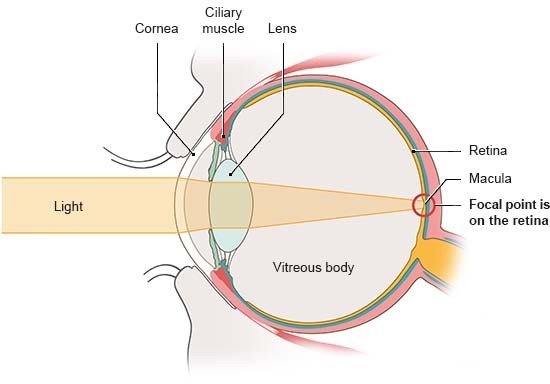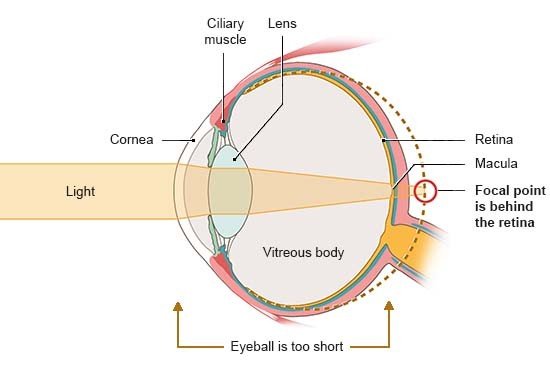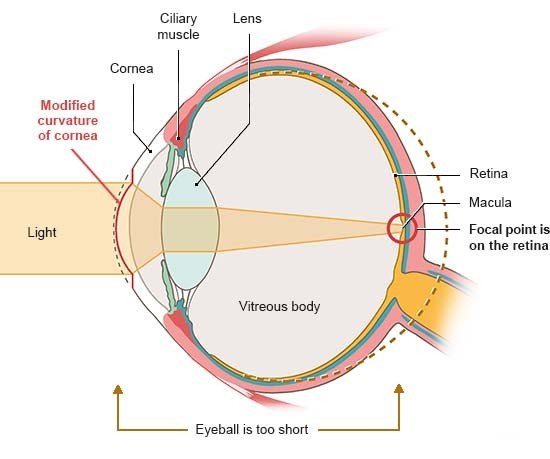Surgery for farsightedness

If you are farsighted, you can’t see nearby objects clearly. Various surgical procedures are sometimes an option to improve or correct farsightedness. But there are no good-quality studies on their pros and cons.
If you are farsighted, your eyes don’t refract light enough. When you are younger, they can often compensate for that. But that can put your eyes under a great deal of strain, possibly causing problems like stinging eyes and headaches. As we get older, our eyes are less able to correct for this, meaning nearby objects become more and more blurred. Presbyopia (age-related farsightedness) can make this even worse.
Farsightedness can be corrected effectively with glasses or contact lenses. Surgery may also be an option for adults to permanently correct the refractive error. There are several different procedures:
- Laser procedures can increase the cornea’s refractive power.
- In lens surgery, an artificial lens of the right thickness is implanted.
Ideally, you will no longer need glasses or contact lenses afterwards. But there are no reliable studies into these procedures for farsightedness, and along with the cosmetic and practical advantages they also pose risks, such as impaired vision and infections. And you have to cover the costs yourself because they are not medically necessary.



